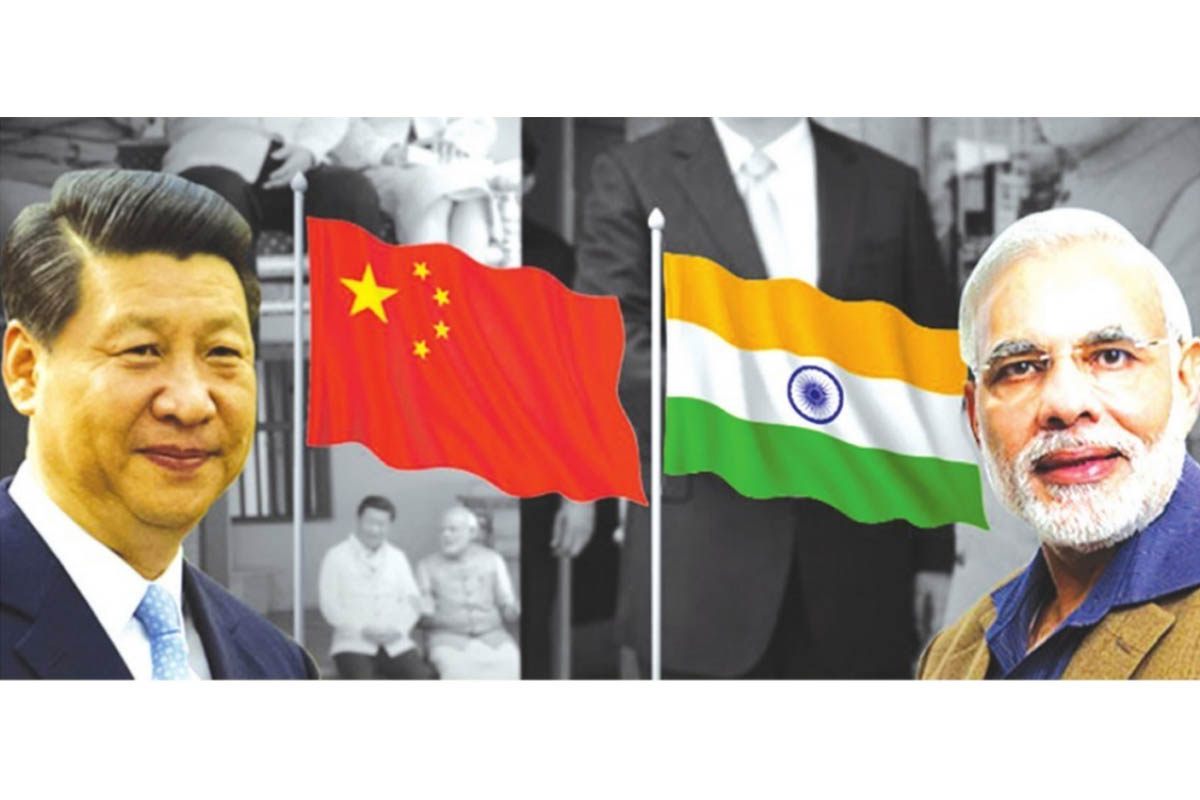China’s white paper on defence 2019 has said that it is striving to promote security and stability along the India-China border and has created what it termed ‘favourable conditions’ to resolve the Dokalam standoff in 2017. The reference to Dokalam in the white paper was more tongue-in-cheek seeing that China has continued to reinforce its infrastructure and troops not far from the standoff site. The standoff began when Indian troops objected to the PLA building a road close to the narrow chicken’s neck corridor.
The question that arises is whether India should take China’s pronouncements at face value. First, relating to the back down at Dokalam in 2017. After the 74-day standoff the Chinese realised that this time around they had bitten off far more than they could chew as opposed to incursions elsewhere over the decades, notably Depsang.
The attempt to build the road to the Jampheri Ridge which would allow them to overlook the Siliguri Corridor would not have been allowed by Indian commanders at any cost. A confrontation would have been disastrous for the Chinese as the Indian positions on the East Sikkim watershed overlooking Dokalam were so formidable that the Chinese troops would not have stood a chance. The pullback was a military necessity and not a conciliatory attempt that is being made out in the white paper
In addition, the statement that ‘Beijing was striving to promote security and stability along the IndiaChina border (emphasis added) is a travesty of facts, adding insult to injury. What are the facts as they obtained on the ground as the white paper went into print?
China continues to claim Arunachal Pradesh as part of China, calling it South Tibet. It objected to the visit of the Dalai Lama sanctioned by the government of India. It even objected to a former prime minister of India’s visit to the province. All this happened after 2005. Before that no such claim had been made. On a visit to Vietnam at a South China Sea Conclave in Hanoi a few years ago, during a meeting of the author with the Vice Minister, the latter mentioned that China had added to its claims in the Spratly Islands and the Paracels in the same year.
For all practical purposes, China has taken over the Northern Areas of Jammu & Kashmir – Gilgit and Skardu – sending in thousands of armed troops, reckoned at a division plus, under the guise of securing the infrastructure for CPEC (China-Pakistan Economic Corridor) in addition to thousands of Chinese labourers and engineers. The area as China knows is disputed and claimed by India. Additionally, it is reportedly paying for a Pakistan army division in Baluchistan to kill Baluchs – citizens of Pakistan – in order to protect its corridor to Gwadar. The Baluch people have accused China of outright grabbing as a large settlement for 150,000 Chinese settlers – virtually a Chinese colony – is coming up.
The inroads into Sri Lanka, Bangladesh, Myanmar and Nepal are not being considered in this paper. The government of India is being given to understand that China is likely to settle the border question that has been lingering for decades as priority. The assurance to this effect is buttressed in the white paper. A settlement that the Indian government can accept seems unlikely, unless China makes major concessions in return for unacceptable quid pro quo. The military asymmetry between the two is such that only the stronger side can make concessions. The weaker side has no such options. Assuming for a moment that a settlement does take place what intrinsic value would it hold for the Indian military on the border whose threat perception would not be diminished an iota unless China were to simultaneously renounce all claims to Arunachal Pradesh. It would be naïve for any military set up to do so.
There is a yet bigger threat that looms far larger across the Himalayas that is unlikely to diminish any time in the foreseeable future. Attention is drawn to the phenomenal military build-up and construction of airfields, rail and road lines right up to the Indian border at a frenetic pace. Enough logistics is being positioned to wage war that could be sustained for years, if required. The contradiction does not seem to have been highlighted in New Delhi or Moscow (more on it later) in spite of the enormity of the threat.
China’s occupation of Tibet is complete. No nation in the world question it. The situation in that benighted country is so hopeless that over 150 Tibetan monks and nuns have self-immolated – something that has never happened before in history. The Chinese have not eased up any of the controls on the captive nation. Their memory has been dulled under the communist dispensation to the fact that Tibet for over a millennium had blown nectar on diaphanous wings of gossamer to the Chinese people after the Nalanda masters first introduced Buddhism into Tibet.
What has China done in return? It has not honoured the 17-Point Agreement entered into with the designated Tibetan representative of the Dalai Lama for granting autonomy to the rump TAR (Tibet Autonomous Region). Up to that time Chinese troops had not arrived in Lhasa. It has killed and incarcerated over a million Tibetans, many of whom still languish in concentration camps exposed to inhuman torture. In return for the nectar that rolled down from on high over the ages it has spewed millions of gallons of poison on the Tibetan plateau. The defoliation and desecration of the Third Pole that plays a very big role in the climate balance of the world has seriously undermined the livability of people on the Indian subcontinent.
The surprising part in all this has been the pusillanimity of Indian leaders from the time of the first leader Jawaharlal Nehru who handed over Tibet to China on a platter up to the present day. No Indian leader at the top has ever protested at the carnage on the Tibetan Plateau that will increasingly affect the future of South Asian populations and even those of the riparian states of Southeast Asia. No Indian leader has ever remonstrated with the Nepal government at the treatment meted out to the hapless Tibetans who have had to flee their mother country.
And now China has come out with the most outlandish claim to the effect that China will decide on the next Dalai Lama; this while the 14th Dalai Lama is alive. He claims that he will live to at least a hundred years. It is to be wondered as to which of the Chinese leaders taking this decision will be at the helm at the time to see it through. It does not matter they do not care that not a single Tibetan in Tibet or elsewhere will ever accept a Dalai Lama imposed by the hated Chinese government. The Indian government has remained silent. At some stage it has to realize that it cannot be business as usual in the coming years. After the Dalai Lama if anyone has a locus standi on his future incarnation it is the government of India for reasons that are historical, spiritual and emotional for the people of India.
India has a new prime minster, hopefully in a different mould from his predecessors as far as Tibet, the Tibetans in exile and the Chinese activities in Tibet are concerned. While no Indian leader can even remotely think of challenging China militarily now or in the future they have to remain mindful of the gigantic Chinese military presence and continuing build up of military infrastructure in Tibet when no nation or a combination of nations has the will or the remotest capability to attack the Chinese mainland. The writing on the wall has been read by military leaders in Moscow, notwithstanding the present geo-strategic embrace between China and Russia.
The latest Economist (July 27thAugust 2nd 2019) on its cover shows the mighty Russian bear pitiably shrunk in size sitting in the lap of an overblown panda. At present Russia retains the ability to prevent China from pushing in troops to bolster BRI activities in Kazakhstan and westwards as in the case of CPEC in Pakistan. However, the outsized military deployment overlooking the Central Asian Republics can only have one purpose; roll westwards into Kazakhstan and beyond or southwards into India, whenever the opportunity presents itself.
Mr. Modi has emerged as a strong leader for India. The strongest in decades with a staggering popular mandate that has been taken note of across the globe. It is a force multiplier by any reckoning. Wuhan led to a thaw in relations. However, the asymmetry was noticeable. The next summit with Mr. Xi Jinping is scheduled for October 2019 in Varanasi in India. Mr. Modi will have to raise questions that he did not raise at Wuhan for real peace and tranquility to obtain on both sides of the Himalayas, even a start to the demilitarisation of the Himalayas as an existential imperative. In less than twenty years it will not matter one bit as to which power holds sway across the Himalayas.
The writer, a retired Major-General of the Indian Army, is author of Third Millennium Equipoise.











